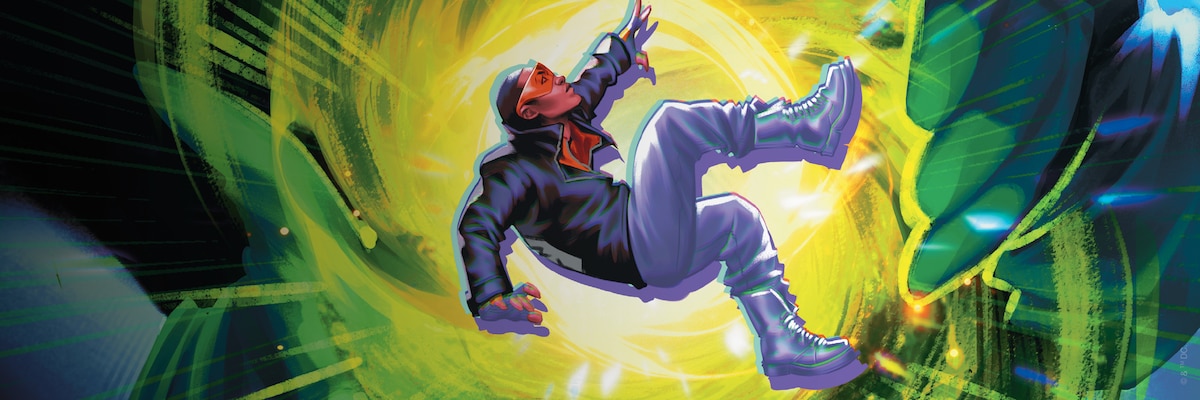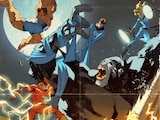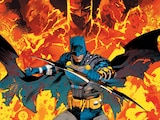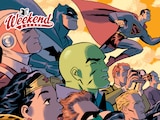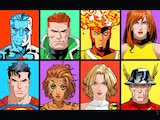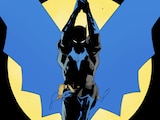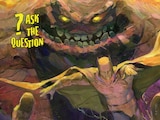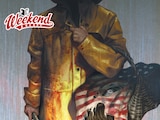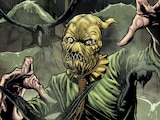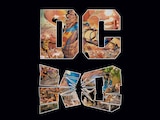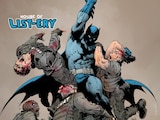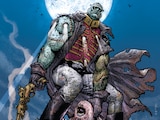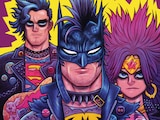Mr. Terrific has been a celebrated DC character since the late ’90s and an invaluable member of both the JSA and the Justice League. Through TV series like Justice League Unlimited and Arrow, along with acclaimed comics such as JSA and Strange Adventures, the jacket-clad fighter for justice has slowly been growing in popularity and prominence. However, he’ll likely soon be a household name. On July 11, Mr. Terrific will make his silver screen debut in the new Superman movie, played by Edi Gathegi. But who is Michael Holt, Mr. Terrific, and how did he become the hero that he is?
The answer to that question is best answered right now on the shelves of your local comic book shop. Debuting last month, Al Letson, Valentine De Landro and Edwin Galmon’s Mr. Terrific: Year One is giving Michael Holt the origin story he deserves, revealing how a terrible tragedy gave birth to one of the DC Universe’s most bright-minded superheroes. Recently, Letson dropped by the DC office to share some details about the series and talk all things Mr. Terrific—from whether or not he’s truly the smartest man in the DCU to the details of his iconic signature jacket!

The series has already debuted, but what is your “elevator pitch” for Mr. Terrific: Year One for those just tuning in?
Mr. Terrific, Michael Holt, is the smartest man in the DCU. The story is about how the smartest man goes from just being a rich inventor, into a man who feels like the world needs more fair play, and he’s got to put on this costume and go make it happen.
Hell yeah. And he has a cool jacket! Can you break down the meaning of the jacket and the words written on it?
Yes! So, the jacket—well we should just say first that DC should give me one of those jackets. I would like to have one. I’d be very grateful for it. I have a kidney that they could have in exchange.
But really, it's a great jacket! Michael Holt is the second Mr. Terrific, the first was Terry Sloan. He wore a jacket that said “fair play” on it. Terry was trying to talk to the kids in his community and say, “You don’t have to be a gangster, and everyone deserves fair play.” And I think when Michael picks up that mantle, he really buys into the fact that “fair play” is what we need in America today. It's an homage to the Terry Sloan character.

Mr. Terrific hasn’t had too much solo attention in the comics, especially as of recently. What is it like bringing his origin story to life?
I think it’s essential. His origin story links in with so much of the larger DC story. There were bits and pieces about Mr. Terrific’s origin story told in different places. Some of it is told in The Spectre, some of it is told in a Flash annual, so what I wanted to do was figure out how to gather up all those bits and pieces and bring it into a comprehensive story that also connected the past to the present day DCU.
One of the things is that in the present day, Darkseid is dead. Darkseid came to the Watchtower and just went off on everybody and then was out. If you look at those panels, Mr. Terrific looks like he’s in a daze a little bit. I thought that was a great opportunity. He’s not in a daze—he’s a thinker! He’s utilizing his superpower. He’s figuring it out. So, I think being able to give this character an origin story that people can latch onto, especially with him in the new Superman movie, is essential.
What’s it been like working with this creative team for Mr. Terrific: Year One?
One of the things in comic books that just does not get enough credit are the editors. So, the first people I’ll talk about are the editors, Andrea Shea and Marquis Draper. Great notes. They just make everything so much better.
Then the artists, Edwin Galmon (present day timeline artist) and Valentine De Landro (flashback timeline artist)—they are different types of artists and the way I work with them is different. With Edwin, I tend to tell him, “This is what I’m thinking. You're great, do your thing!” because when I am not trying to confine him, he tends to just go ham. It’s so good. There’s not a whole lot of back and forth with Edwin.
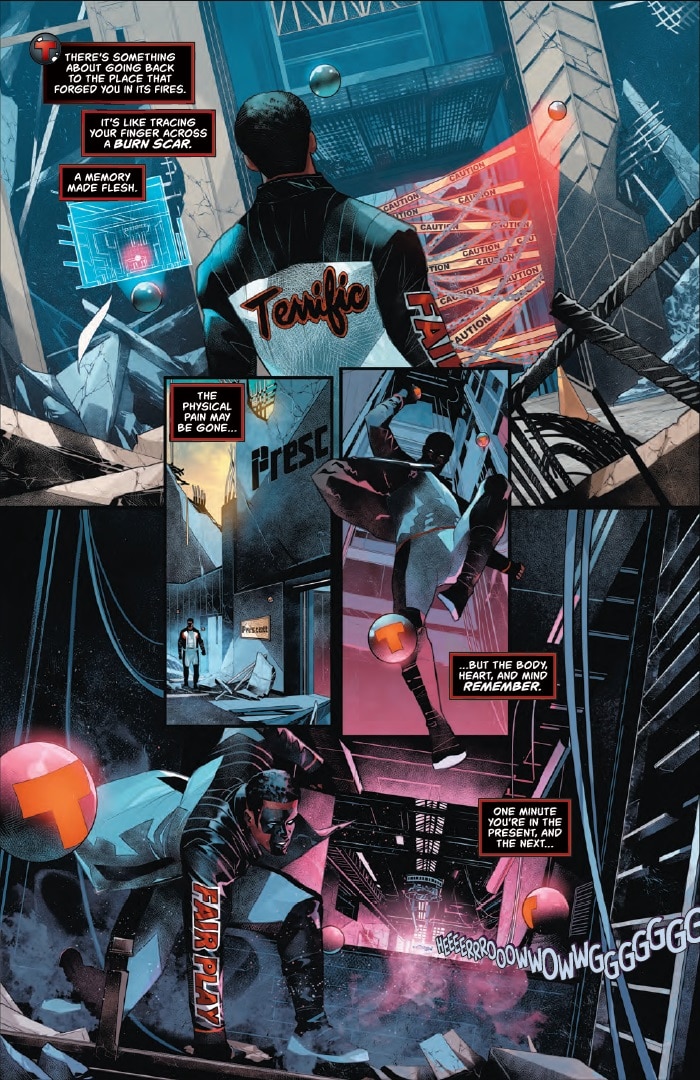
Valentine and I tend to talk about every issue. We sit down and have an hour or two conversation. Because I’m a comic book fan, I never want to forget as a writer that comics are a visual medium. And so, I’m always thinking about what we can do cool visually with this book. When Valentine and I talk about it, he’s just such a craftsman. He thinks though all of this stuff really well—how to do the storytelling, how to bring characters forward. He’s told me what his favorite things to do are in comics, and so I try to write towards that. We have a great relationship when it comes to bouncing things back and forth. He’s excellent.
The colorist, Marissa Louise, is just fantastic. Watching her take the black and white art and bring it to life is just absolutely thrilling. And then the person that never gets any credit is the letterer, and our letterer Lucas Gattoni is just so excellent because what he has to do is bring the two worlds together. We have the present-day story and the flashback story, and Lucas is the bridge in between the two. If he works, then it all feels seamless, and he does work.
How were you first introduced to Mr. Terrific?
Like you, I am very much a fan of the old cartoons. I first saw him there, and then I read some JSA issues that he was in. I didn’t really think much about him. I just thought he was cool. Then Strange Adventures from Tom King came out and Tom’s take on Mr. Terrific blew my mind! I was like—I now understand this character. And more importantly, I understand a way into this character.
As a writer, you can love all these characters, but you’ve got to have a take. You need a way to get into who they are. I think a lot of the writing that Tom King did with Mr. Terrific brought me into that world and then he became a character that I had to do something with.
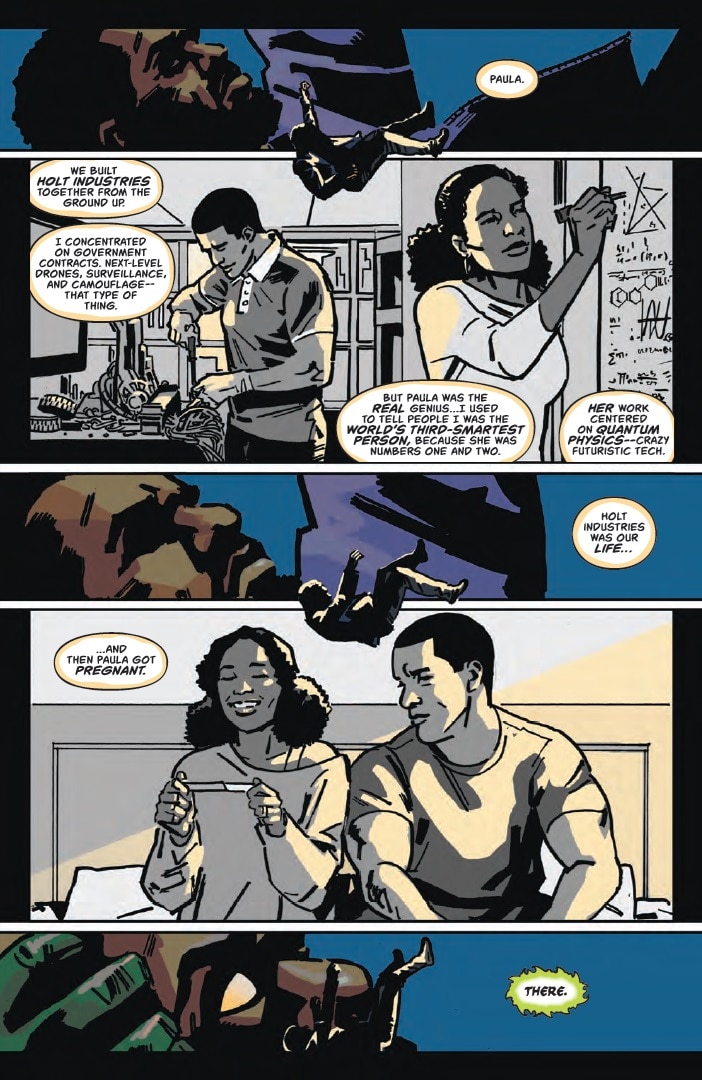
There are a lot of relevant themes in the first issue about how harmful corporations are willing to sacrifice communities in the pursuit of technological advancements. Are there any real-world events that inspired aspects of this story?
I am also a journalist, so the things that I am talking about with the big-bad Athena Prescott are things I have reported on and seen. It's not a specific incident. A lot of times when technologists have their eye trained in the future, they don't really look at the mess that they are making in the present. What I wanted to do was tell that story—what that mess looks like. And also, I think what was missing, for me, from Michael’s origin story is a sense of responsibility. In the original story, Michael is at the point of killing himself and the Spectre shows up and says, “Don’t kill yourself, be a hero!” and Michael just says, “Okay.” I like that kind of set up, but I didn’t want him to be saving the world and putting on a costume just because his wife died and he was sad. I wanted him to have a sense of responsibility.
I think the best characters have a sense of responsibility. Batman doesn’t want anyone to experience what he experienced in Crime Alley. Superman has been told, “You have all this power, you have to do something good with it.” Wonder Woman is sent out from Themyscira being told that these humans—these men—are screwing up the world, so go fix it. I wanted to give Terrific that kind of drive.
Last question! What can you tease about the series that you are excited for people to see?
I’m excited for people to see all the connections—how it connects to the DC All In Special and other characters. In issue #4, there is a surprise cameo. And finally, I hope when you meet his best friend—who is a character that we all know and love, but we haven’t necessarily seen them super tight together—I hope that will set a trajectory where we get to see them together more often.
Mr. Terrific: Year One #2 by Al Letson, Valentine De Landro, Edwin Galmon and Marissa Louise is now available in print and as a digital comic book.
